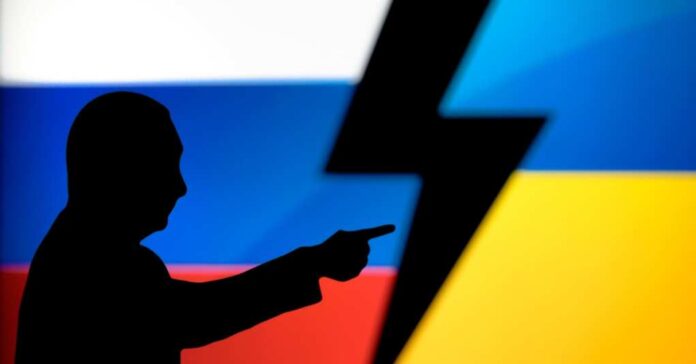
In the wake of the horrific Moscow concert massacre that claimed nearly 140 lives, doubts have been raised about ISIS’s claim of responsibility. Russian authorities have charged four individuals with terrorism in connection to the attack following their alleged capture and mistreatment by Russian security services.
Despite ISIS’s repeated assertions of involvement, including posting selfies and videos purportedly showing the attackers, Russian officials remain skeptical. Maria Zakharova, a spokesperson for the Russian foreign ministry, even suggested that blame for the attack should be directed towards the West, questioning the certainty of ISIS’s involvement.
Zakharova further criticized the United States for spreading what she called the “bogeyman” of ISIS to deflect attention from its interests, particularly in Ukraine. President Vladimir Putin refrained from directly linking the attackers to ISIS, instead suggesting they were attempting to flee to Ukraine.
He insinuated that individuals on the Ukrainian side may have facilitated their escape. However, Ukraine has vehemently denied any involvement, with President Volodymyr Zelenskiy accusing Putin of attempting to shift blame.
Zakharova’s remarks coincided with the release of disturbing footage showing Russian forces allegedly torturing the suspects in custody. One image depicted a suspect, Shamsuddin Fariddun, lying on the floor with wires attached to his groin. At the same time, another video showed another suspect, Saidakrami Murodali Rachabalizoda, being forced to eat his severed ear.
These suspects, among four detained individuals, were paraded in court displaying injuries, indicating potential mistreatment by authorities. Further footage from inside the concert hall revealed the terror and chaos as gunmen opened fire on innocent civilians, resulting in numerous casualties.
Photographs presented in court showed Rachabalizoda with a bandaged ear, raising concerns about the reliability of any confessions obtained under duress. Social media videos capturing the suspects’ arrests suggest a pattern of coercion and brutality.
The dissemination of these images to sympathetic media channels suggests a deliberate effort to showcase the suspects’ mistreatment. A Telegram channel associated with the Wagner paramilitary force detailed the methods used in the suspects’ interrogation, including electric shocks and waterboarding.
The statement from Zakharova suggests that the authorization for these acts of torture, both against the suspects in the Moscow attack and Ukrainian prisoners, originates from the highest levels of authority. It draws a parallel between these atrocities and the actions of Yevgeny Prigozhin, an associate of Vladimir Putin, likening him to an executor carrying out the dictator’s will. The implication is that the Russian security forces, under Putin’s direction, utilize torture to manipulate narratives and secure confessions that align with their agenda.
Reports indicate that Fariddun was observed surveilling the Crocus City Hall venue days before the attack, coinciding with warnings issued by the US and UK embassies regarding potential threats to crowded areas. Following his apprehension in the Bryansk region, images surfaced showing him kneeling in captivity.
Exiled journalist Dmitry Kolezev condemned the Russian security forces’ actions, alleging that they leaked photos of torture to the media to manipulate public perception. He suggested that confessions extracted through torture might be used to falsely implicate individuals, including Ukrainian President Zelensky, in orchestrating the attack. Kolezev noted a shift in the authorities’ approach, with torture tactics previously concealed now being brazenly displayed, indicating a disturbing normalization of such practices.
The discovery of four sets of combat ammunition, over 500 rounds of ammunition, and 28 magazines at the site of the tragic incident paints a grim picture of the violence that unfolded. Alongside these findings, two Kalashnikov assault rifles were also recovered from the concert hall, indicating a well-armed assailant or assailant. The initial gunfire targeted innocent bystanders in the foyer before the attackers moved into the concert hall, unleashing terror upon the attendees. The situation escalated further when the perpetrators set the building ablaze, leading to the collapse of the roof and exacerbating the chaos and devastation.
The response to this heinous act has been a mix of mourning and condemnation. Russian President Vladimir Putin declared March 24 a day of national mourning, paying his respects at a church within the premises of the presidential residence in Novo-Ogaryovo. However, amid the grief, accusations flew from Britain, accusing Putin of employing a veil of propaganda to deflect Russia’s aggressive actions in Ukraine by insinuating Ukrainian involvement in the Moscow tragedy. Chancellor Jeremy Hunt articulated the skepticism, expressing little faith in the Russian government’s statements and attributing the attack to their propaganda tactics.
Meanwhile, Ukrainian President Volodymyr Zelensky criticized Putin’s focus on implicating Kyiv rather than addressing the concerns of Russian citizens. The situation escalated as Russian state media broadcast footage of suspects, presumably linked to the attack, being taken into custody. These developments, coupled with reports of one suspect displaying signs of physical abuse upon appearing in court, only added to the complexity of the situation.
Amidst the investigation, reports surfaced linking the attackers to the Islamic State. US intelligence sources pointed towards the Islamic State Khorasan Province (IS-KP), a faction of IS primarily active in South Asia, as the likely orchestrator of the assault. However, concrete evidence linking the attackers to IS-KP remains elusive.






